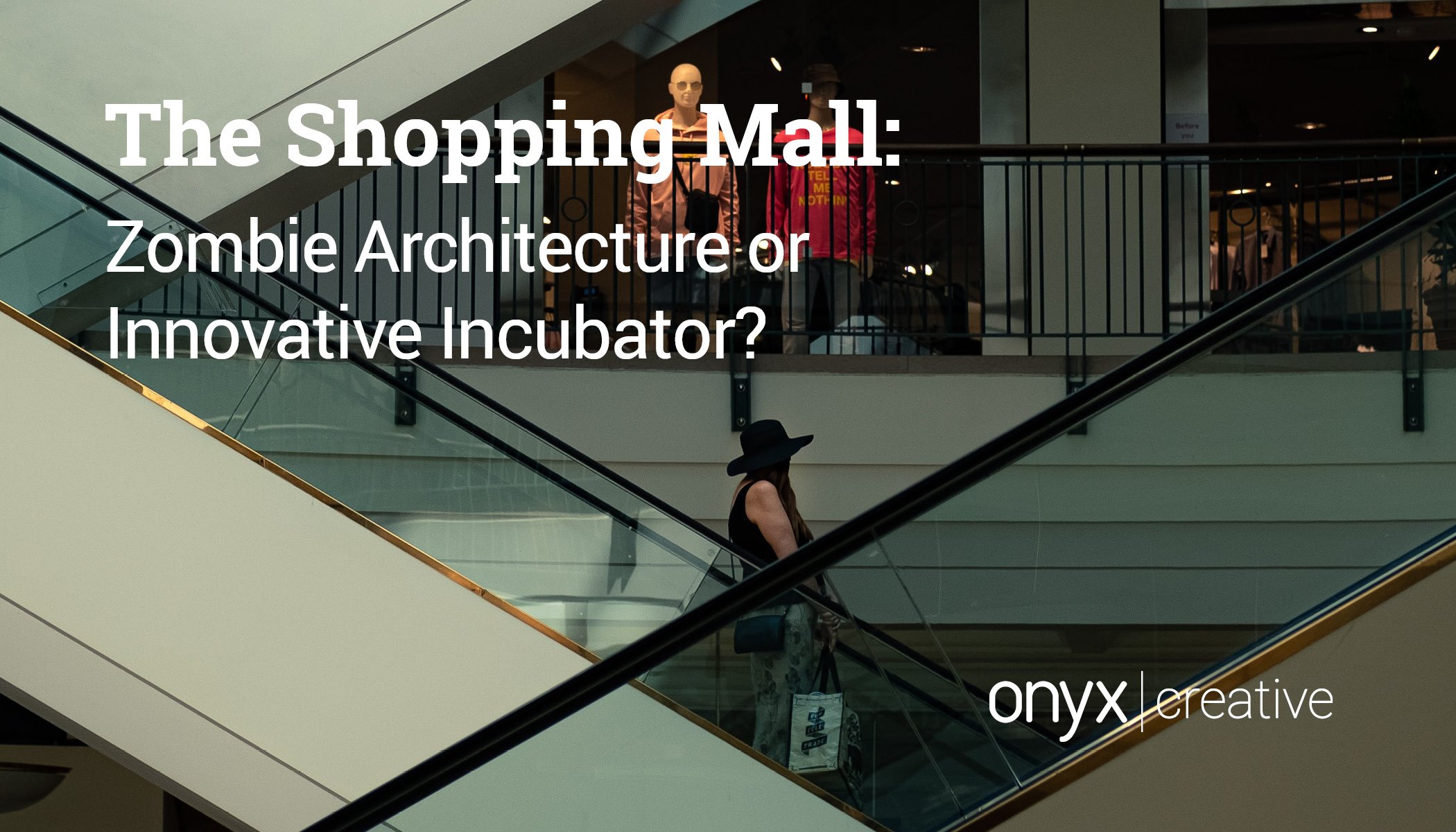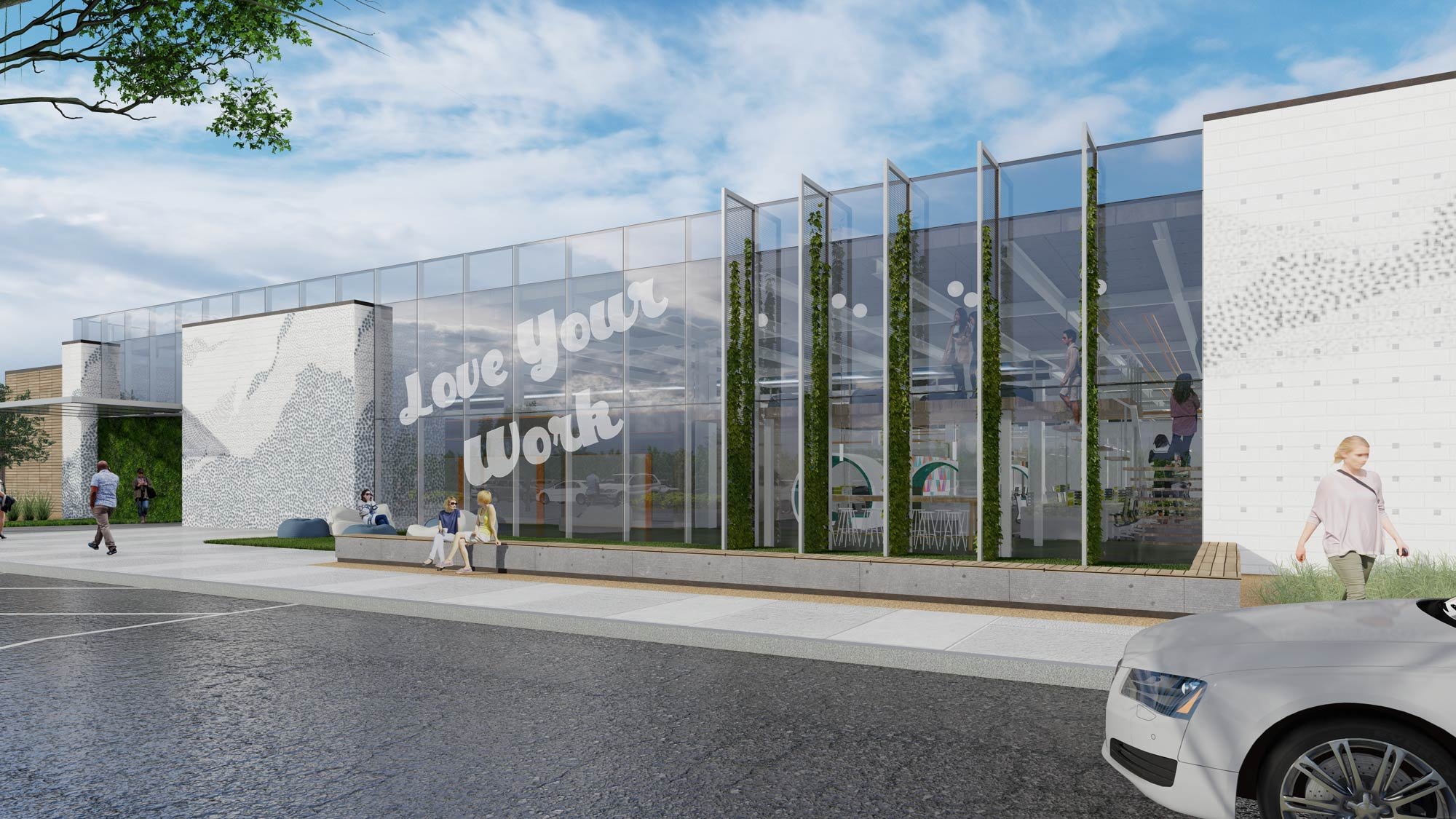By Jonathan Novak, Director of Design
The shopping mall consumes an enormous amount of space in our collective consciousness. It occupies this space like the library and the stadium: as a powerful collective social space and a monumental physical object. However, the library and stadium are both ancient typologies tested by time while the auto-oriented shopping mall is a recent invention. Growing up in the post-war suburbs, malls followed the trajectory of suburbanization. Much has been written about the shopping mall and most of it is highly critical. You know most of these critiques and have watched them play out in movies like Mall Rats, Dawn of the Dead, and Fast Times at Ridgemont High. Often funny, ironic, or nostalgic, the shopping mall in cinema is portrayed as an ersatz environment cut off from the real world. It’s a hermetically sealed container where the drama plays out.
As much as the mall represents everything I may think is bad in architecture — anti-urban exteriors, wayfinding nightmares, automobile-centric — they were wildly successful. Since the first shopping mall was designed by Victor Gruen in 1956, the numbers exploded to over 1,100 centers across the United States. The public loved them. So, of course, they were overbuilt. And here we are today in a digital retail landscape asking what to do about these faddish relics.
Proposed concept for an alternative use of the massive roof of a former shopping mall.
Any quick search on the internet will comfort you with the following facts: that malls need to undergo reinvention, that there are ‘the best’ malls and ‘the rest’ malls, and that malls in some form are part of a larger retail landscape that goes from URL to IRL. We have been fortunate in our firm to have worked on two large mall repositioning projects over the past five years. My experience with these projects challenges these common facts. My observations from working on malls in the San Francisco Bay Area and in the North Tampa area are that the optimistic dreams of reinvention often meet the hard reality of leasing. That in the end, big-box tenants chew up the mall as it gets turned inside out. And when big boxes don’t cannibalize the mall and new, ‘innovative’ tenants come in it seems to me that we haven’t accomplished anything. The poor architectural and urban design of the mall merely persists. They become zombie architecture continuing to live on.
Former anchor store to office concept.
Former anchor store to co-working concept.
The story, however, isn’t all bad news. As the retail market corrects the glut of the gross leasable area available, I see two trends that are worth celebrating. The first is the decommissioning of the mall entirely. For instance, Tri-County Mall in Cincinnati (which we worked to reinvigorate in 2016) has now been bought by new owners and the mall will be torn down and replaced by 60 new residential and office buildings. Vibrant new architecture and public space will soon take the mall’s place. And the second trend is the continuing improvement of the successful malls. The great malls like Mall of America, South Coast Plaza, and King of Prussia Mall will continue to innovate the retail environment. They will have retailers that will push the architectural, material, and technological boundaries. Just think of Fabletics and how their development team targeted these malls for their first 25 stores. That brand was one of the first of its kind to go from digital to brick-and-mortar and it leveraged these top malls to do it.
Acting as incubators for new retail concepts seems like a noble re-purpose for an old idea.
Legacy mall to mixed-use lifestyle center concept.



































